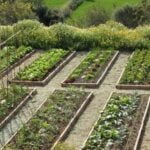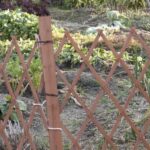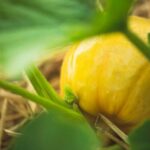Are treated pine sleepers ok for vegetable gardens? Treated pine sleepers are a popular choice for landscaping and gardening projects due to their durability, affordability, and versatility.
These timber materials are commonly used for constructing raised beds, retaining walls, and other outdoor structures. In this article, we will delve into the benefits of using treated pine sleepers in vegetable gardens, potential concerns with their use, how to choose the right type of sleepers, and tips for incorporating them into your garden design.
Treated pine sleepers are treated with preservatives to enhance their resistance to decay, insects, and weathering. This makes them a long-lasting and cost-effective option for building raised beds in vegetable gardens. They can withstand the humid conditions often found in garden environments and provide a sturdy framework for growing vegetables.
However, some gardeners have expressed concerns about the potential chemical leaching from treated pine sleepers into the soil and the environmental impact of using these materials. It’s important to consider these factors when deciding whether to use treated pine sleepers in your vegetable garden. In the following sections, we will explore these issues in more detail and provide guidance on how to mitigate any potential risks associated with using treated pine sleepers for your garden projects.
Benefits of Using Treated Pine Sleepers in Vegetable Gardens
Treated pine sleepers are a popular choice for constructing raised beds in vegetable gardens due to their numerous benefits. These versatile landscaping materials offer several advantages that make them ideal for use in garden projects:
- Durability: Treated pine sleepers are highly durable and resistant to decay, making them suitable for long-term use in vegetable gardens. This longevity means that they can withstand the outdoor elements and provide a stable foundation for the raised beds.
- Affordability: One of the primary advantages of using treated pine sleepers is their affordability. Compared to other materials such as stone or composite materials, treated pine sleepers are cost-effective, allowing gardeners to create raised beds without breaking the bank.
- Versatility: Treated pine sleepers come in various sizes and shapes, giving gardeners the flexibility to customize their raised bed designs according to their specific needs. Whether it’s creating straight-edged beds or curved shapes, treated pine sleepers can be easily manipulated to fit different garden layouts.
In addition to these benefits, treated pine sleepers also have a natural look that blends well with garden landscapes, adding a rustic charm to the overall aesthetic. With proper maintenance and treatment, they can enhance the visual appeal of vegetable gardens while serving a practical purpose.
When used appropriately and maintained regularly, treated pine sleepers can be an excellent choice for vegetable gardens, offering durability, affordability, and versatility that can benefit gardeners of all skill levels. However, it’s essential to consider potential concerns associated with using treated pine sleepers and take necessary precautions to ensure their safe and sustainable use in gardening projects.
Potential Concerns With Using Treated Pine Sleepers
Chemical Leaching
One of the main concerns with using treated pine sleepers in vegetable gardens is the potential for chemical leaching. Treated pine sleepers are infused with chemicals to make them resistant to decay and insect damage, but these chemicals can leach into the surrounding soil over time.
This could be harmful to the plants and vegetables growing in the garden, as well as impact the overall soil quality. It is important to consider this risk when deciding whether to use treated pine sleepers in a vegetable garden.
Environmental Impact
Another concern associated with treated pine sleepers is their environmental impact. The chemicals used to treat the wood can be harmful to the environment if not managed properly. When disposed of, treated pine sleepers can release these chemicals into the surrounding ecosystem, potentially causing harm to local wildlife and water sources. Additionally, the production of treated pine sleepers may also have environmental implications due to the use of certain chemicals and energy-intensive processes.
Considerations for Use
When considering using treated pine sleepers in a vegetable garden, it is important to weigh these potential concerns against the benefits. If opting for treated pine sleepers, it may be advisable to look for products that are certified as safe for use in organic gardening or explore methods for minimizing chemical leaching.
Additionally, it might be worth exploring alternative materials that offer similar durability and functionality without some of the potential drawbacks associated with treated pine sleepers. Making an informed decision based on careful consideration of these factors will ultimately contribute to creating a healthy and sustainable vegetable garden environment.
Choosing the Right Type of Treated Pine Sleepers
Treated pine sleepers come in a variety of options, each with its own set of advantages and considerations. When choosing the right type of treated pine sleepers for your vegetable garden project, it is important to consider factors such as treatment method, timber grade, and size.
Treatment Method
Treated pine sleepers are typically preserved using different chemical treatments to protect the wood from decay, rot, and insect infestation. The most common treatment methods include CCA (copper chrome arsenate), ACQ (alkaline copper quaternary), and LOSP (light organic solvent preservative). Each treatment method offers different levels of protection and has its own set of pros and cons.
Timber Grade
Another factor to consider when choosing treated pine sleepers for your vegetable garden is the timber grade. Treated pine sleepers are available in various grades, ranging from high-quality structural grades to non-structural landscaping grades. It is essential to select a timber grade that is suitable for the intended use in your vegetable garden to ensure longevity and performance.
Size
Treated pine sleepers come in a range of sizes, from standard dimensions to custom-cut lengths. The size of the sleepers you choose will depend on the specific requirements of your vegetable garden design. Consider factors such as raised bed height, width, and overall layout when selecting the size of treated pine sleepers for your project.
By carefully considering the treatment method, timber grade, and size of treated pine sleepers, you can ensure that you select the most suitable option for your vegetable garden project. It’s essential to weigh the benefits and drawbacks of each type of treated pine sleeper to make an informed decision that aligns with your gardening goals and environmental values. Ultimately, choosing the right type of treated pine sleeper will contribute to the success and sustainability of your vegetable garden.
Preparing Treated Pine Sleepers for Vegetable Gardens
Treated pine sleepers are a popular choice for constructing raised beds in vegetable gardens due to their durability, affordability, and versatility. However, there are some important steps that should be taken to properly prepare and treat the pine sleepers before using them in a vegetable garden.
The first step in preparing treated pine sleepers for vegetable gardens is to let them air out for a few weeks before installation. This allows any residual chemicals from the treatment process to dissipate, reducing the risk of chemical leaching into the soil and potentially harming plants. During this airing out period, it’s important to store the sleepers in a well-ventilated area away from children and pets.
Once the airing out period is complete, it’s recommended to seal the treated pine sleepers with an appropriate sealant or coating to further reduce the risk of chemical leaching and protect the wood from moisture and decay. There are various eco-friendly sealants available on the market that are safe for use in vegetable gardens. Before applying any sealant, make sure to carefully read and follow the manufacturer’s instructions for best results.
It’s also crucial to wear protective gear such as gloves and a mask when handling treated pine sleepers, especially during preparation and sealing. This will help minimize direct skin contact with any remaining chemicals on the surface of the wood and reduce inhalation of potentially harmful fumes. Taking these precautionary measures can help ensure that treated pine sleepers are safe for use in vegetable gardens while providing a long-lasting framework for bountiful harvests.
| Preparing Treated Pine Sleepers | Steps |
|---|---|
| Airing out | Letting them air out for a few weeks before installation |
| Sealing | Applying an appropriate sealant or coating after airing out period is complete |
| Protective Gear | Wearing gloves and mask when handling treated pine sleepers |
Tips for Using Treated Pine Sleepers in Vegetable Gardens
When using treated pine sleepers in vegetable gardens, there are certain tips and best practices that can help ensure the success of the project. One important tip is to consider the placement of the treated pine sleepers within the garden layout.
It’s advisable to position them in a way that maximizes sun exposure for the plants and allows for easy access for watering, harvesting, and maintenance. Additionally, incorporating different levels and angles with treated pine sleepers can add visual interest to the garden and create unique planting opportunities.
Another tip for using treated pine sleepers in vegetable gardens is to properly anchor and secure them in place. Since these sleepers are often used to create raised beds, it’s essential to install them securely to prevent shifting or collapsing over time.
This can be achieved by using sturdy corner brackets or metal stakes to keep the sleepers in place. Additionally, applying a layer of gravel or small stones at the bottom of the raised bed can improve drainage and stability.
Furthermore, when using treated pine sleepers in vegetable gardens, it’s important to choose appropriate soil and mulch materials for filling the raised beds. Utilizing high-quality soil that is suitable for vegetable growth is crucial for the success of the garden.
It’s also recommended to use organic mulch materials, such as straw or wood chips, to help retain moisture, suppress weeds, and regulate soil temperature within the raised beds. By following these expert tips and best practices, gardeners can effectively incorporate treated pine sleepers into their vegetable garden designs while ensuring optimal growing conditions for their crops.
Alternatives to Treated Pine Sleepers
When considering the construction of raised beds for vegetable gardens, it is essential to explore alternative materials to treated pine sleepers. While treated pine sleepers offer several benefits, including durability, affordability, and versatility, some individuals may have concerns about potential chemical leaching and environmental impact. Fortunately, there are alternative materials that can be used to construct raised beds in vegetable gardens, providing a safer and more environmentally friendly option.
Some alternatives to treated pine sleepers for constructing raised beds in vegetable gardens include:
- Untreated wood: Using untreated wood such as cedar or redwood can be a natural and durable option for building raised beds. These types of wood are naturally resistant to decay and insect damage, making them a sustainable choice for organic gardening.
- Stone: Building raised beds with stone offers a beautiful and long-lasting option for vegetable gardens. Stone provides excellent drainage and heat retention for plants while adding an attractive visual element to the garden space.
- Composite materials: Choosing composite materials made from recycled plastic and wood fibers can provide a low-maintenance and eco-friendly solution for constructing raised beds. Composite materials are resistant to rot, decay, and insect damage, offering a long-lasting option for vegetable gardens.
Before deciding on which alternative material to use for constructing raised beds in vegetable gardens, it is important to consider factors such as cost, availability, durability, and overall aesthetic appeal. Each material has its own set of advantages and considerations that should be taken into account when planning the construction of a vegetable garden.
exploring alternative materials like untreated wood, stone, or composite materials for constructing raised beds in vegetable gardens provides individuals with options that are safe, environmentally friendly, and aesthetically pleasing. By carefully considering the benefits of each material in relation to their specific gardening needs and preferences, individuals can make informed decisions about which alternative material is best suited for their vegetable garden projects.
Conclusion
In conclusion, treated pine sleepers can be a viable option for constructing raised beds in vegetable gardens, as they offer several benefits that make them attractive to gardeners. Their durability, affordability, and versatility make them an appealing choice for garden projects, and with proper preparation and maintenance, the potential concerns related to chemical leaching and environmental impact can be mitigated.
However, it is essential for gardeners to consider the specific type of treated pine sleeper they choose, as well as to follow proper guidelines for their preparation and use.
When choosing treated pine sleepers for a vegetable garden project, it is crucial to select the right type of treatment that is suitable for direct contact with soil and plant roots. Additionally, following expert tips on how to properly prepare and treat the pine sleepers before use can help minimize any potential risks associated with using treated wood in a garden setting.
Gardeners should also consider alternatives such as untreated wood, stone, or composite materials if they have concerns about using treated pine sleepers in their vegetable gardens.
Ultimately, while there are potential concerns with using treated pine sleepers in vegetable gardens, they can still be a practical choice when used responsibly. By understanding the benefits and potential issues associated with using treated pine sleepers and taking appropriate precautions, gardeners can create beautiful and productive vegetable gardens with the help of these versatile landscaping materials.
Frequently Asked Questions
Is Treated Pine Safe for Vegetable Gardens?
Treated pine can be safe for vegetable gardens as long as it is treated with non-toxic preservatives. Some types of treated pine, such as ACQ (alkaline copper quaternary) or copper azole, are considered safe for use in vegetable gardens because they do not contain harmful chemicals.
However, it’s important to check the specific treatment used on the pine to ensure its safety for growing edible plants.
What Are the Best Sleepers for Vegetable Gardens?
The best sleepers for vegetable gardens are typically ones made from untreated hardwood, such as red gum, ironbark, or railway sleepers made from jarrah or ironwood. These types of sleepers are durable and resistant to decay without the need for potentially harmful chemicals that could leach into the soil and affect plant growth.
Is It OK to Use Pressure Treated Wood in a Vegetable Garden?
It is generally not recommended to use pressure treated wood in a vegetable garden, especially if it has been treated with CCA (chromated copper arsenate). This chemical can leach into the soil and be absorbed by plants, posing a potential health risk when consuming fruits and vegetables grown in this environment.
Instead, opt for alternative materials such as untreated hardwood, cedar or non-toxic treated wood specifically designed for organic gardening purposes.

If you’re looking to get into vegetable gardening, or are just looking for some tips on how to make your current garden better, then you’ve come to the right place! My name is Ethel and I have been gardening for years. In this blog, I’m going to share with you some of my best tips on how to create a successful vegetable garden.





